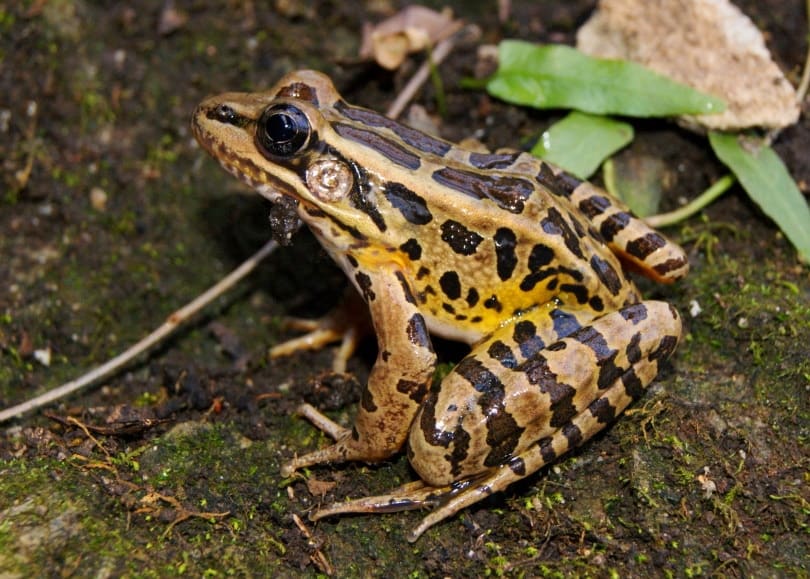Ohio has many beautiful sights, from rolling plains to hilly scenery, farmland, and forests. The wildlife is majestic too—there are so many species, including ones that you might not know exist even if you’re a native of the state.
The Buckeye State has 10 frog species, each of which has a distinct look that sets it apart from the rest. If you just spotted a little amphibian outside and want more information, use this guide to help you out!

The 10 Frogs Found in Ohio
1. Gray Tree Frog
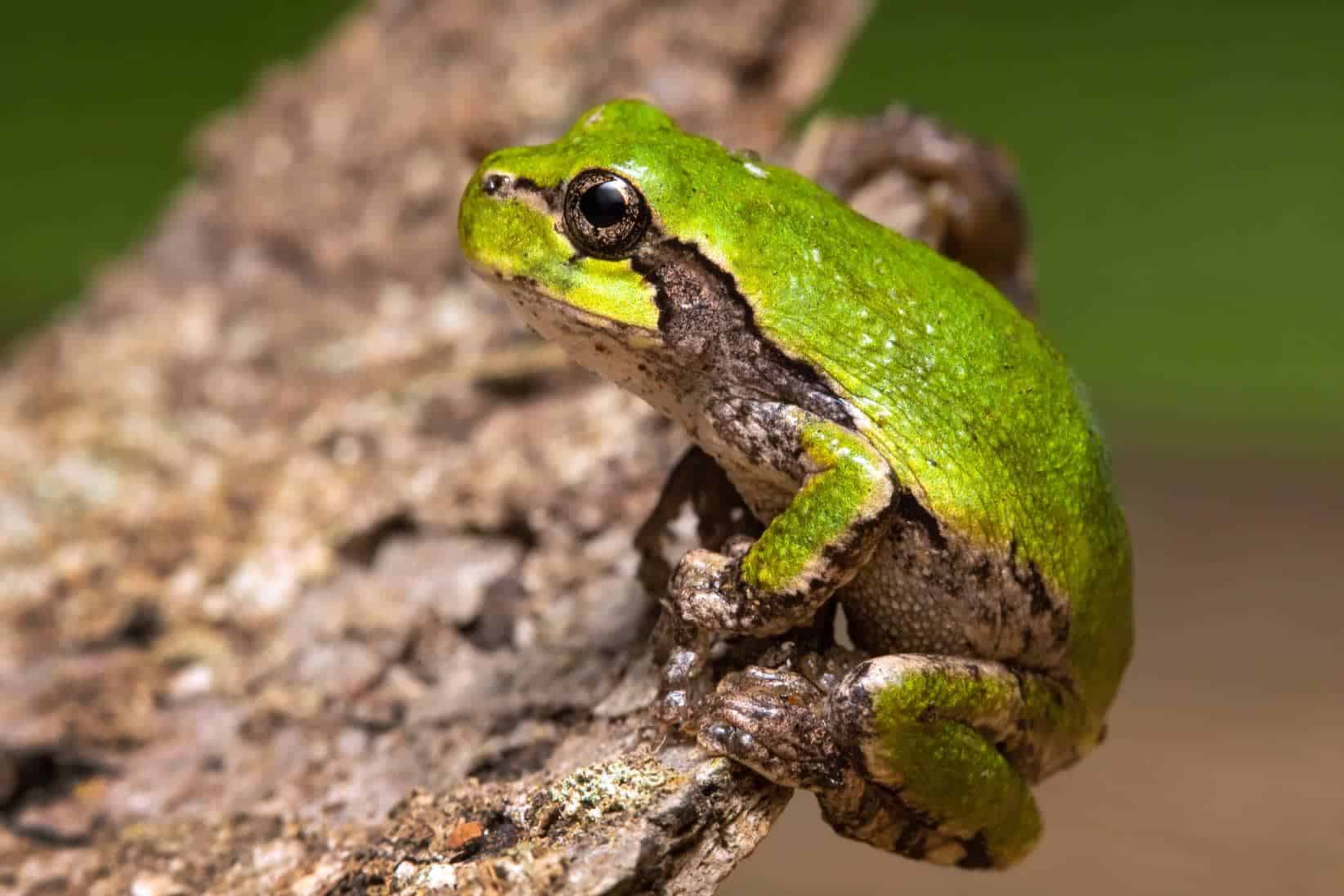
| Scientific name | Hyla versicolor |
| Status | Common |
| Size | 2.5 inches |
The gray tree frog lives in Ohio in pretty high numbers. These frogs are completely nocturnal, meaning they’re most active at night. You might have heard a male singing from the trees at night, emitting a call that attacks mates and repels threats.
The gray tree frog lives up to its name, touting rough skin that changes from grayish green to nearly white, adding an extra layer of camouflage protection. These arboreal frogs have sticky fingers and toes to grip branches high up in the treetops.
Adults only reach a maximum of 2.5 inches, with females outweighing their male counterparts. Both sexes are equally vulnerable to predators, which include birds, snakes, and other small mammals. Gray tree frogs snack on a medley of insects.
2. Wood Frog

| Scientific name | Lithobates sylvaticus |
| Status | Common |
| Size | 3.25 inches |
Wood frogs are very hardy amphibians that fare very well in cooler climates. This terrestrial species finds refuge in thick forests, woodlands, and other similar areas.
You can recognize a wood frog by color, as it ranges from beige to brown with dark (nearly black) facial masks. Unlike many other species, females have brighter colors than their male counterparts.
Interestingly, these frogs can survive in northern states all the way up to Alaska. These frogs will completely freeze to combat harsh winters—no heartbeat, no breath—and reanimate in spring months. Their bodies fill with a natural substance that protects cells and other vital organs during the process.
3. Spring Peeper
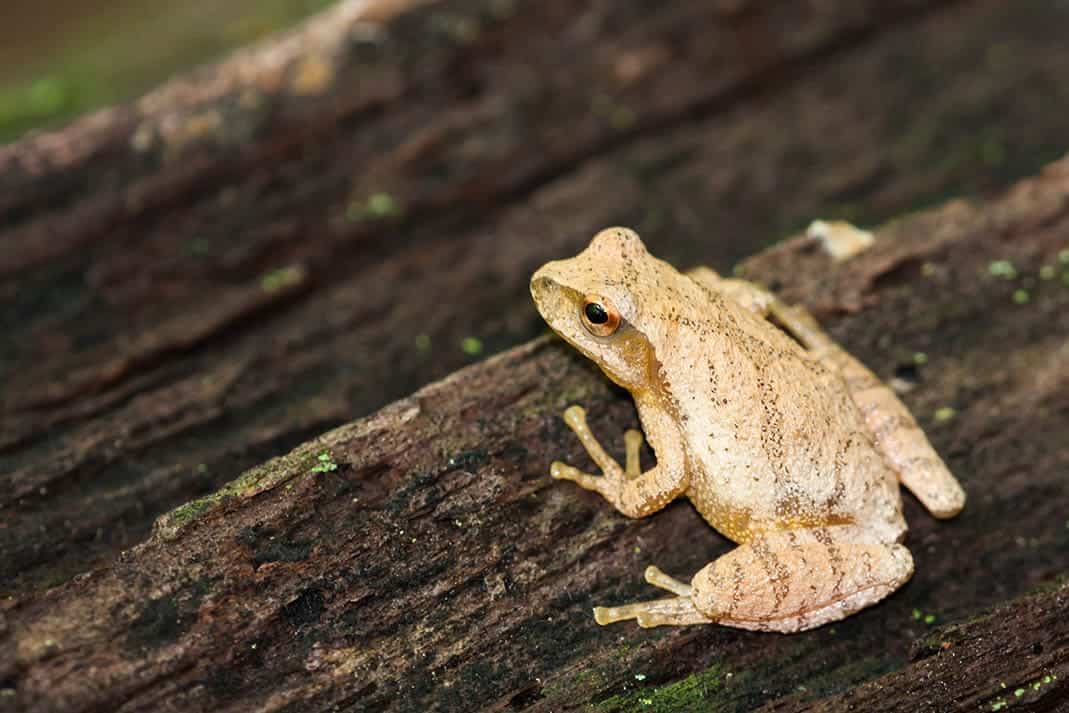
| Scientific name | Pseudacris crucifer |
| Status | Common |
| Size | 1 inch |
The petite spring peeper got its name from the behavior it displays in spring months. Once these little frogs get a taste of oncoming life in their bones, they start to sing in celebration. You can find them dwelling in heavily wooded areas to dense meadows, and they are usually near a water source.
These frogs range from beige to brown, with a distinct X on their backs. Even though these frogs have the toe pads necessary for tree climbing, they don’t utilize this skill often. Usually, you can find them on the forest floors, hiding among the logs and leaves.
These carnivores feast on a variety of insects, but they aren’t exempt from becoming prey themselves. They make good snacks for other wildlife, including snakes, birds, and larger frogs.
4. Northern Leopard Frog
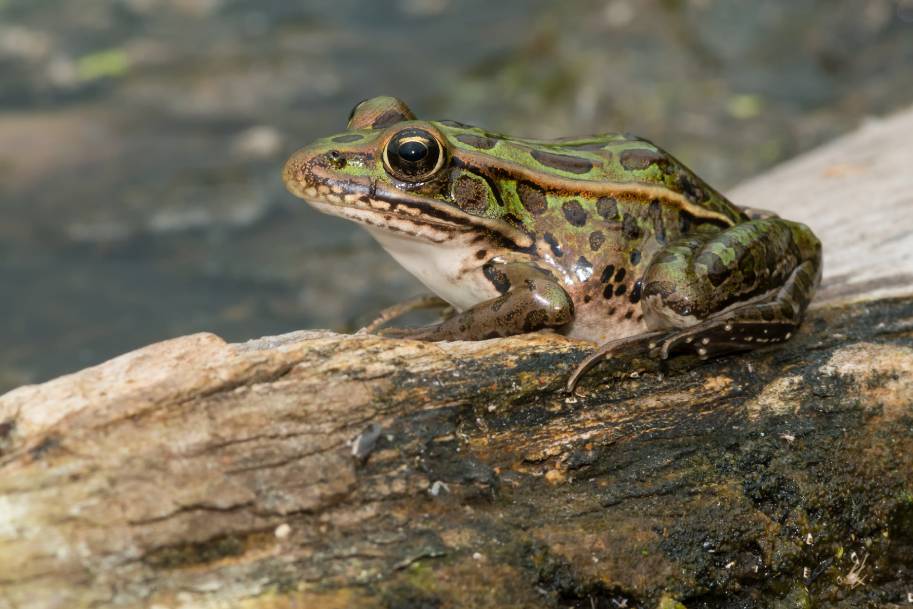
| Scientific name | Lithobates pipiens |
| Status | Common |
| Size | 4.5 inches |
The northern leopard frog is a smooth-skinned amphibian that has slowly declined in population, despite its widespread distribution. There is no real known cause among scientists, but the theory is it’s due to deforestation and pollution.
These frogs have a display of spots covering their bodies with pearl underbellies. Females outweigh their male counterparts, but males and females are otherwise indistinguishable.
These frogs dwell near moist areas such as swamps and wetlands, but they also enjoy meadows, preferring an area that can offer both. Turning the tables on the predator/prey dynamic, these frogs are voracious eaters: They can eat other frogs, birds, and sometimes even smaller snakes.
5. Cope’s Gray Tree Frog
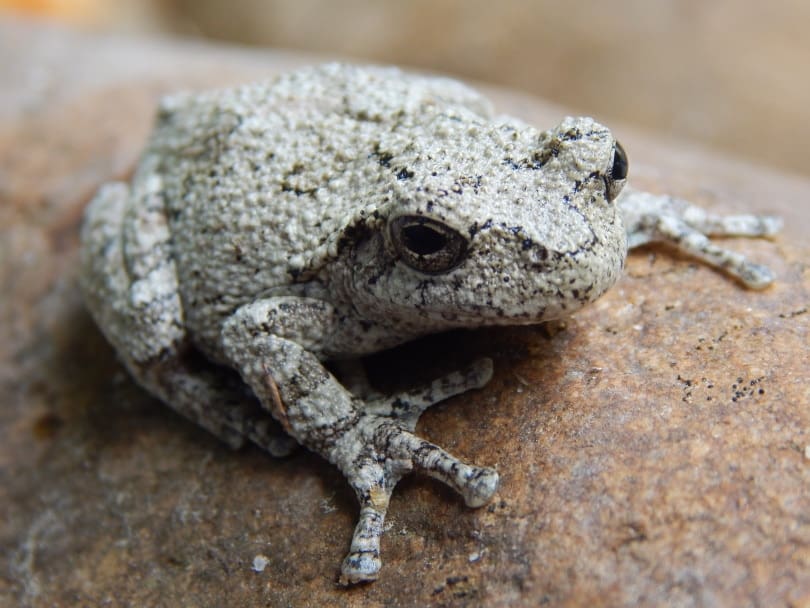
| Scientific name | Hyla chryoscelis |
| Status | Common |
| Size | 3 inches |
These amphibians encompass a large area, ranging over most eastern U.S. states, including Ohio. These arboreal frogs are indistinguishable from their hyla versicolor cousins, but scientists recently discovered differences among them, like their faster trill.
These frogs are a look-but-don’t-touch example, secreting a toxic substance through their skin as a defense mechanism. While it can’t kill you, it can cause eye and other soft tissue irritation that can be quite uncomfortable.
Cope’s gray tree frogs love swampy, grassy, and wooded areas to dwell. They eat a diet of insects found in the treetops. However, they must be careful of natural predators themselves. Due to their excellent bark-matching power, it’s quite easy to stay tucked out of sight.
6. Pickerel Frog
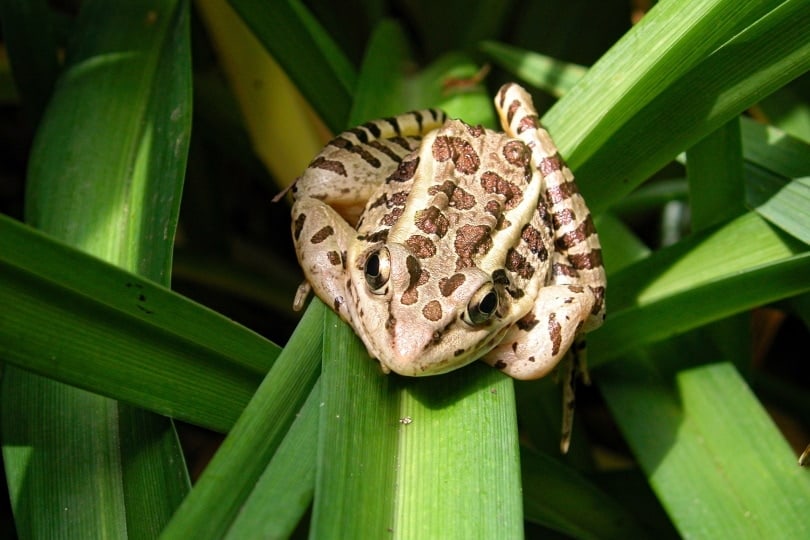
| Scientific name | Lithobates palustris |
| Status | Uncommon |
| Size | 3 inches |
The little pickerel frog is native to Ohio, as well as many other parts of the United States. You might notice that these frogs are very similar to northern leopard frogs. However, they have squared markings rather than spots.
These frogs secrete a mildly toxic substance through their skin to ward off potential predators as a defense mechanism. They usually snack on a medley of insects, but they can also eat insects and invertebrates.
7. Western Chorus Frog
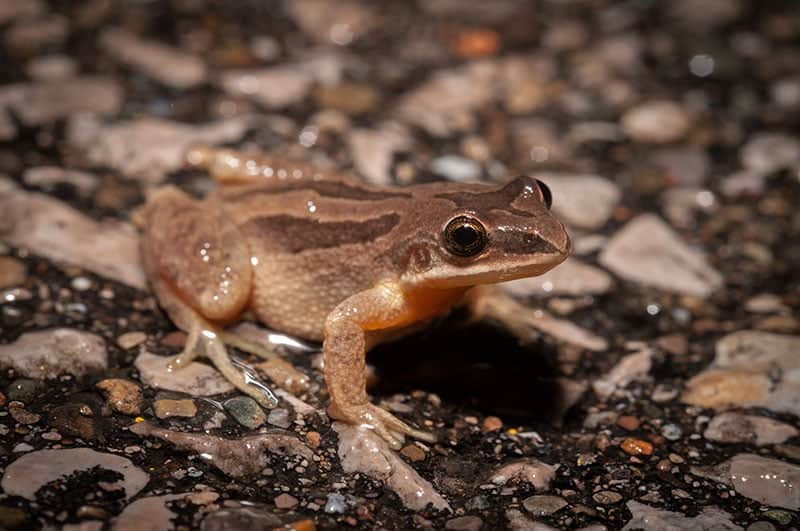
| Scientific name | Pseudacris maculata |
| Status | Common |
| Size | 1.5 inches |
The tiny western chorus frog is a nocturnal amphibian that prefers to go unseen. Since it doesn’t come out during the daytime, even an Ohio native may never run into one. It loves to live in cool, damp environments, like swamps and marshes.
These frogs have such impressive pipes, you can hear them up to a mile away. However, they don’t sing often when they can help it, to keep themselves safe from predators. Typically, they reserve this behavior for mating and communication.
8. Mountain Chorus Frog
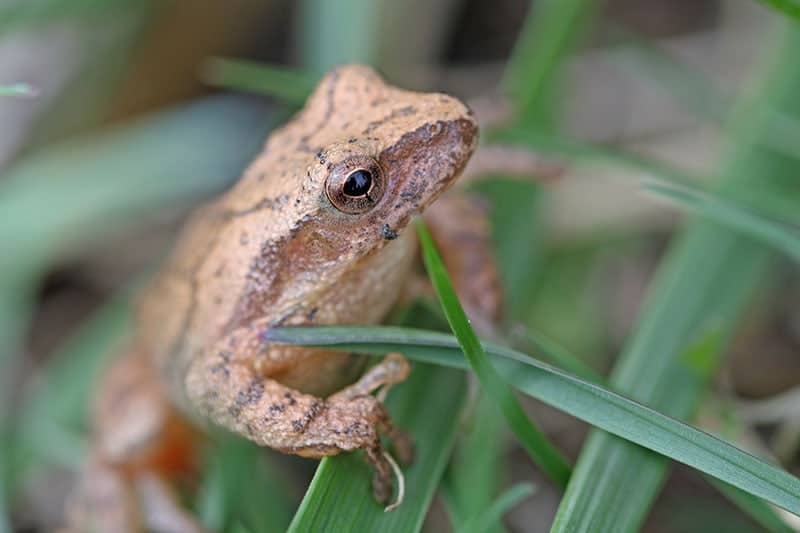
| Scientific name | Pseudacris brachyphona |
| Status | Common |
| Size | 1.25 inches |
Mountain chorus frogs are part of the Hylidae family. They love hanging out in ditches and streams, happily content with minimal but adequate running water. They typically inhabit woodlands and mountainsides, withstanding higher elevations than some other frogs can. These frogs are equipped with the senses necessary to deal with these living conditions.
They have both high- and low-pitch vocalizations, depending on their mood. These frogs are typically solid colored, ranging from olive to brown in color, which is a perfect camouflage.
9. Northern Green Frog
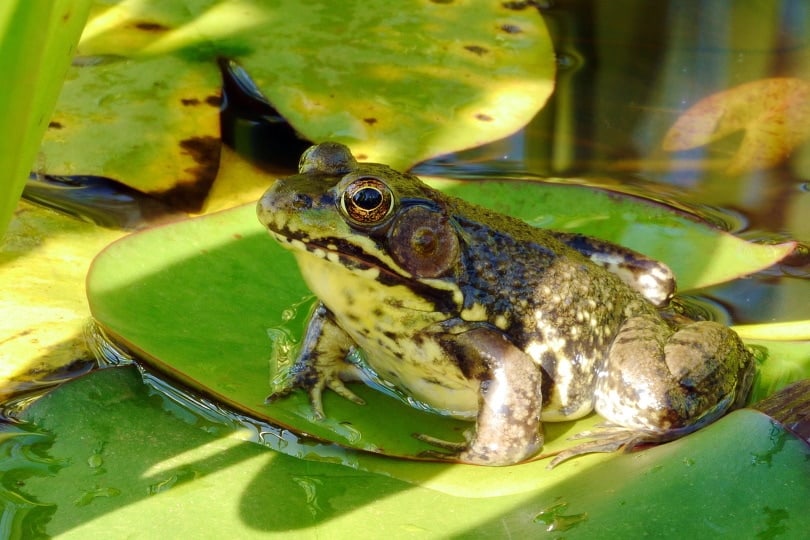
| Scientific name | Lithobates clamitans melanota |
| Status | Common |
| Size | 4.5 inches |
The northern green frog is a highly prevalent species, existing in every county in Ohio. Even though these amphibians are plentiful in the wild, they are equally as standard in the pet trade. They are desirable because they are gentle and easy to care for.
These frogs love hanging out in muddy, damp places like marshes and swamps. They are semi-aquatic, alternating between land and water as needed.
These frogs don’t favor day or night. They can be active at either period and have proper senses for navigating both.
10. Blanchard’s Cricket Frog
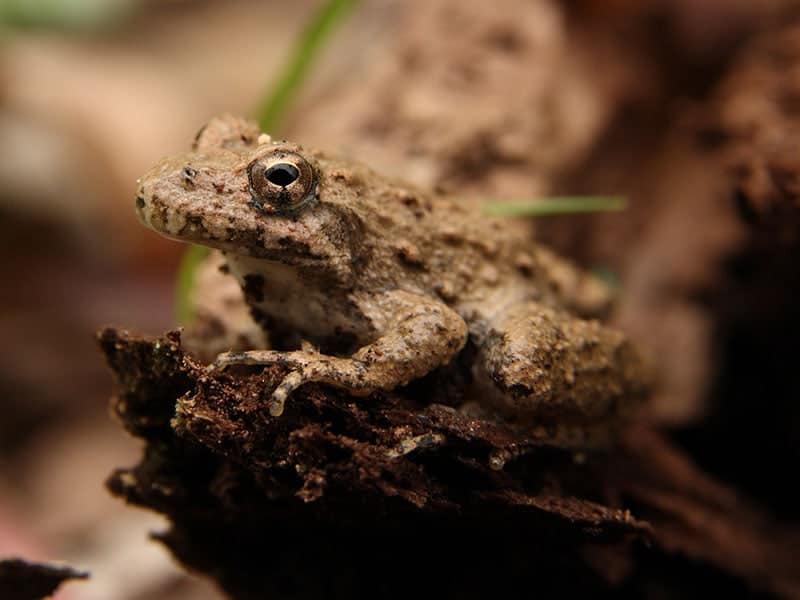
| Scientific name | Acris blanchard |
| Status | Endangered |
| Size | 1.5 inches |
The Blanchard’s cricket frog loves to eat—you guessed it—crickets. This warty-skinned frog is recognizable due to its super rough skin. It loves to hang out next to water sources, taking advantage of all the scrumptious food selections.
Even though these amphibians are pretty remarkable creatures, they are also heavily protected. The cricket frog is threatened, meaning that the numbers are dwindling due to habitat loss.

Conclusion
When you’re out in your garden appreciating the sweet sounds of nature, you might recognize one of these frogs. You can familiarize yourself with the songs and learn to pick out their voices.
Ohio has many terrific frogs to check out. Which one of these fascinating critters caught your attention most?
Related Read:
Featured Image Credit: Matt Jeppson, Shutterstock
